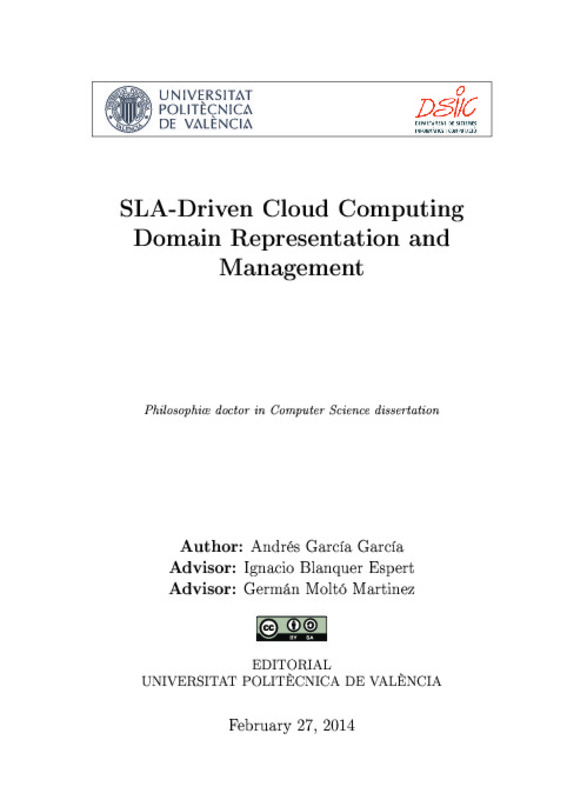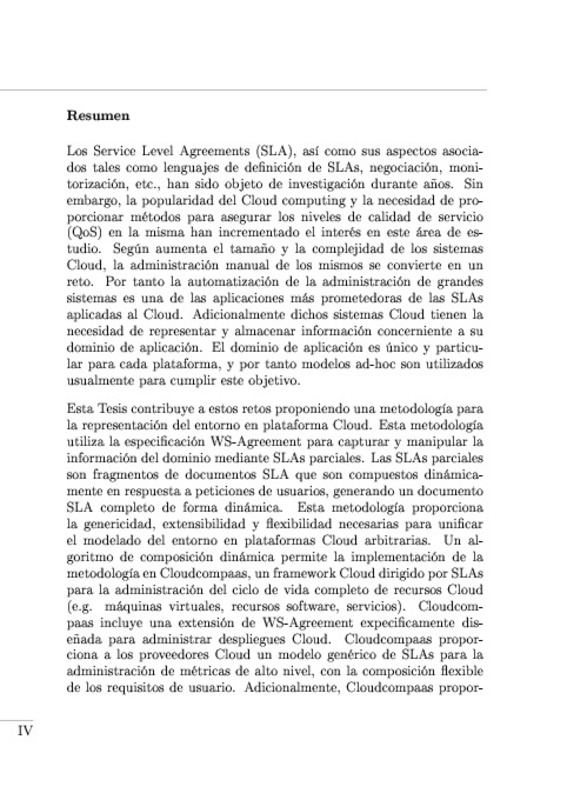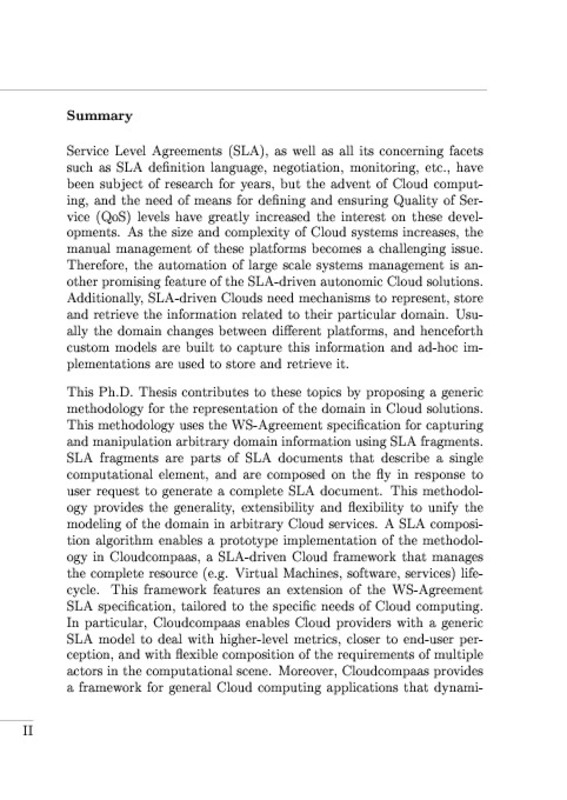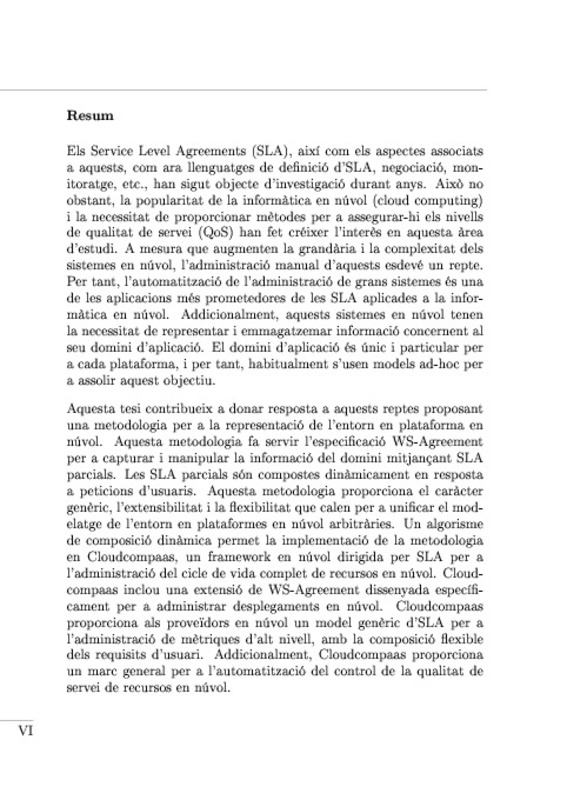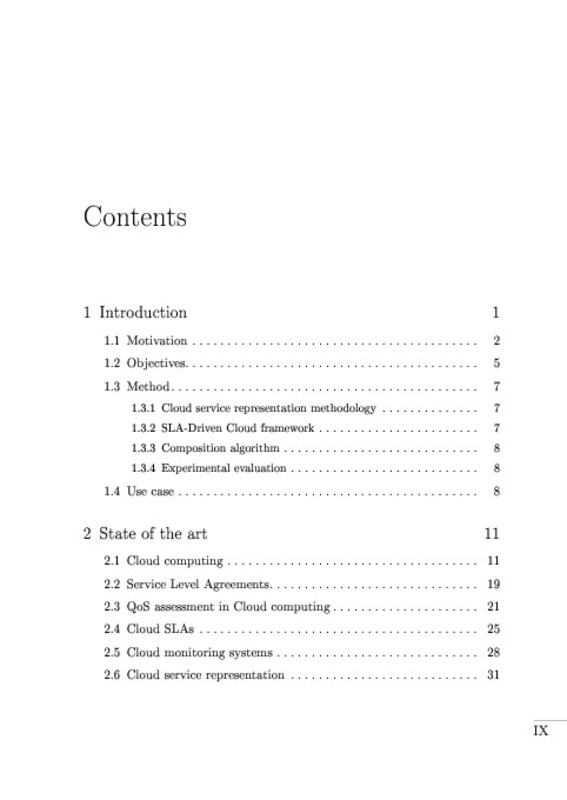- RiuNet repositorio UPV
- :
- Investigación
- :
- Tesis doctorales
- :
- Ver ítem
JavaScript is disabled for your browser. Some features of this site may not work without it.
Buscar en RiuNet
Listar
Mi cuenta
Estadísticas
Ayuda RiuNet
Admin. UPV
SLA-Driven Cloud Computing Domain Representation and Management
Mostrar el registro sencillo del ítem
Ficheros en el ítem
| dc.contributor.advisor | Blanquer Espert, Ignacio
|
es_ES |
| dc.contributor.advisor | Moltó Martínez, Germán
|
es_ES |
| dc.contributor.author | García García, Andrés
|
es_ES |
| dc.date.accessioned | 2014-03-24T07:12:35Z | |
| dc.date.available | 2014-03-24T07:12:35Z | |
| dc.date.created | 2014-03-07T11:00:40Z | es_ES |
| dc.date.issued | 2014-03-24T07:12:34Z | es_ES |
| dc.identifier.uri | http://hdl.handle.net/10251/36579 | |
| dc.description.abstract | The assurance of Quality of Service (QoS) to the applications, although identified as a key feature since long ago [1], is one of the fundamental challenges that remain unsolved. In the Cloud Computing context, Quality of Service is defined as the measure of the compliance of certain user requirement in the delivery of a cloud resource, such as CPU or memory load for a virtual machine, or more abstract and higher level concepts such as response time or availability. Several research groups, both from academia and industry, have started working on describing the QoS levels that define the conditions under which the service need to be delivered, as well as on developing the necessary means to effectively manage and evaluate the state of these conditions. [2] propose Service Level Agreements (SLAs) as the vehicle for the definition of QoS guarantees, and the provision and management of resources. A Service Level Agreement (SLA) is a formal contract between providers and consumers, which defines the quality of service, the obligations and the guarantees in the delivery of a specific good. In the context of Cloud computing, SLAs are considered to be machine readable documents, which are automatically managed by the provider's platform. SLAs need to be dynamically adapted to the variable conditions of resources and applications. In a multilayer architecture, different parts of an SLA may refer to different resources. SLAs may therefore express complex relationship between entities in a changing environment, and be applied to resource selection to implement intelligent scheduling algorithms. Therefore SLAs are widely regarded as a key feature for the future development of Cloud platforms. However, the application of SLAs for Grid and Cloud systems has many open research lines. One of these challenges, the modeling of the landscape, lies at the core of the objectives of the Ph. D. Thesis. | es_ES |
| dc.language | Inglés | es_ES |
| dc.publisher | Universitat Politècnica de València | es_ES |
| dc.rights | Reserva de todos los derechos | es_ES |
| dc.source | Riunet | es_ES |
| dc.subject | Cloud computing | es_ES |
| dc.subject | SLA | es_ES |
| dc.subject | Service level agreement | es_ES |
| dc.subject | QoS | es_ES |
| dc.subject.classification | CIENCIAS DE LA COMPUTACION E INTELIGENCIA ARTIFICIAL | es_ES |
| dc.title | SLA-Driven Cloud Computing Domain Representation and Management | |
| dc.type | Tesis doctoral | es_ES |
| dc.identifier.doi | 10.4995/Thesis/10251/36579 | es_ES |
| dc.rights.accessRights | Abierto | es_ES |
| dc.contributor.affiliation | Universitat Politècnica de València. Departamento de Sistemas Informáticos y Computación - Departament de Sistemes Informàtics i Computació | es_ES |
| dc.description.bibliographicCitation | García García, A. (2014). SLA-Driven Cloud Computing Domain Representation and Management [Tesis doctoral]. Universitat Politècnica de València. https://doi.org/10.4995/Thesis/10251/36579 | es_ES |
| dc.description.accrualMethod | TESIS | es_ES |
| dc.type.version | info:eu-repo/semantics/acceptedVersion | es_ES |
| dc.relation.tesis | 4973 | es_ES |
Este ítem aparece en la(s) siguiente(s) colección(ones)
-
Tesis doctorales [5389]






